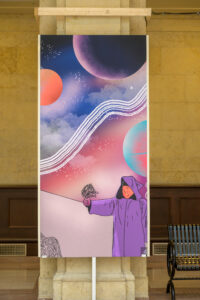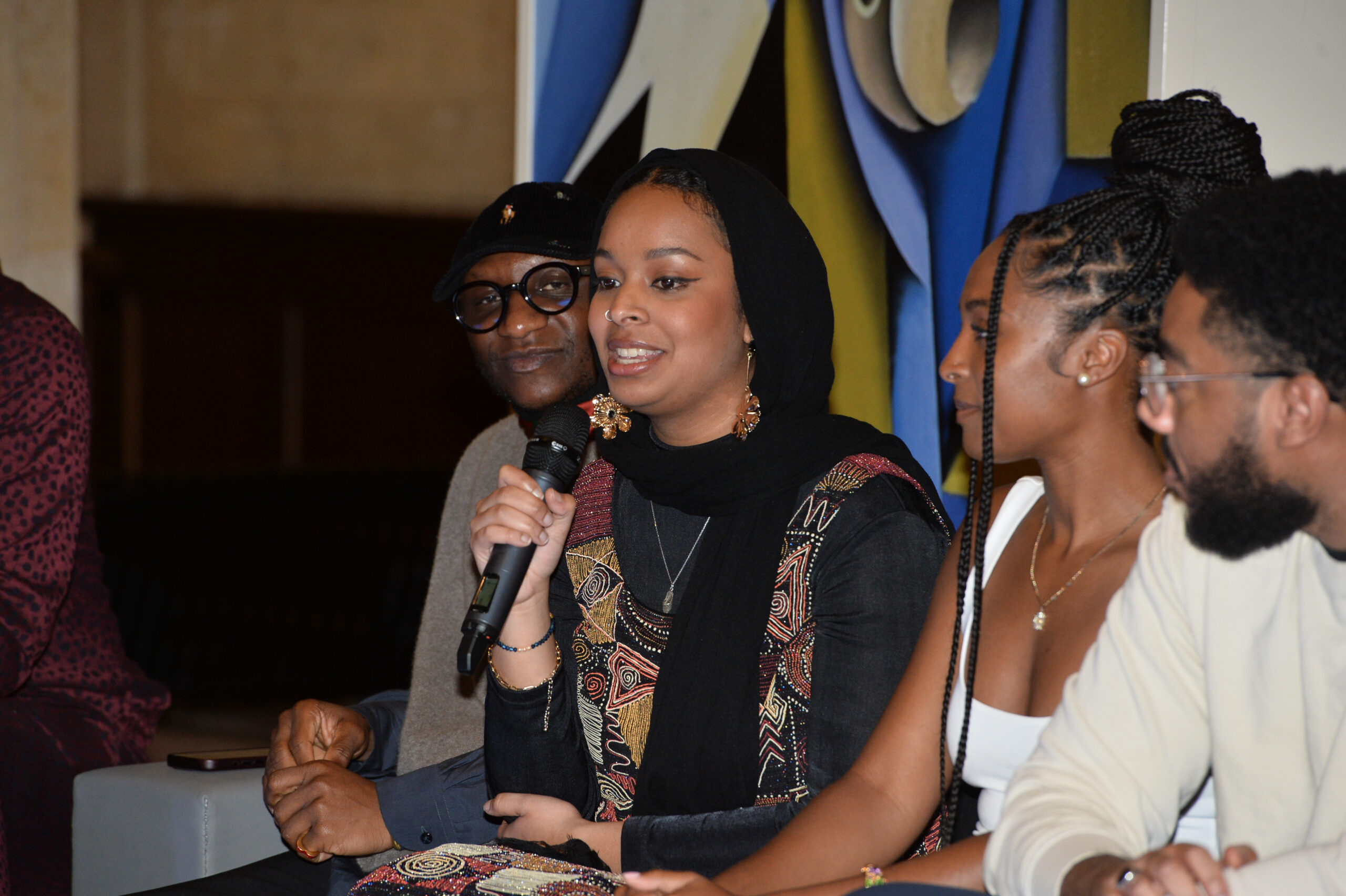Art is a powerful tool of expression. The hopes we have in the past can shape our futures. The ability to create something new or better depends on our ability to imagine it. These ideas and the prompt of what it means to dream while Black are at the core of Union Station’s newest exhibit, Black Dreams and Aspirations, sponsored by TD, co-curated in partnership with MakeRoom Inc.
We were delighted to speak with Sarah Waithe, one of the artists for the exhibit, about what Black Dreams and Aspirations means to her. Her featured artwork, entitled Flowers, challenges the conventional notion of masculinity among indigenous Moroccan men through a retro-futurist lens, by presenting them actively dreaming by offering an alternative reality. It creates a space for authenticity and hope, allowing individuals to be their true selves and permitting them to dream.

What was the inspiration behind your art showcased in the Black Dreams and Aspirations exhibit?
When I heard the theme and open call for the Black Dreams and Aspirations exhibit, I was drawn to it because during this period of my life – and especially previously – I’ve never considered myself a dreamer. I had heard the word said in passing, but it was only until I really invested in my artistic career that I realized dreaming is more active than passive. Dreaming or fulfilling your goals or aspirations is not a linear journey. It’s more so self-sacrifice, being accepting of vulnerabilities and uncomfortable with the unknown. I was really drawn to that. That’s why I love art as well – there are no boundaries, it is limitless. The things that you can do and create, or what you want to see, can be translated onto a canvas. This can resonate and connect with other people.
What message or emotion do you hope viewers take away from experiencing your artwork?
I use a lot of colour in my art, and one way that I use this in my art is to bring joy – not only to myself but to others. I also hope to use art as a form of self-representation. For me, when I view my art, it transports me into a space where things feel authentic, and I feel like the best version of myself. I feel boundless. That’s one of my hopes, but people have their own interpretations with how they connect and resonate with art.
How do you think that art has the power to inspire change in society?
Going back to my own personal journey, and my connection with art, I’ve been doing art since I was young. When you’re young, art is encouraged. But as I continued in my education journey and career, art didn’t seem like a feasible or viable option. So, I went down a more traditional path, obtaining a Bachelor’s and Master’s from University. There, I fell in love with the art form of research. Research is a way of storytelling, in a sense. As a researcher, you may have the privilege and honour of sharing the stories of underprivileged and marginalized groups. Groups that might not have the spotlight or resources to have their voices heard. So, now I try to connect both art and research together, because I find that art is more accessible. It can go across different cultural and language boundaries, and people can see art from their own viewpoint and perspective as well.

Thank you, Sarah, for taking the time to speak with us about your artwork showcased in the Black Dreams and Aspirations exhibit. You can find Sarah’s art in the West Wing of Union Station from now until May. Stop by today to experience it yourself.
Click here for more information about Union’s Black History Month exhibit.




